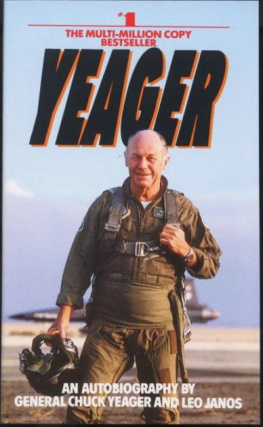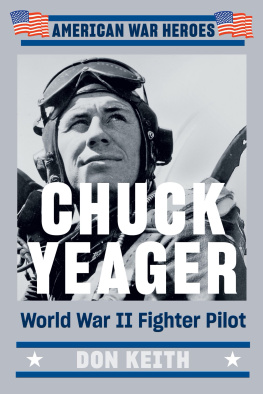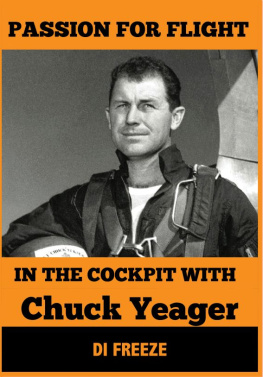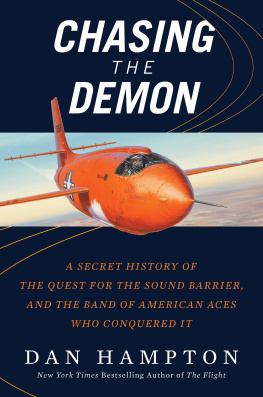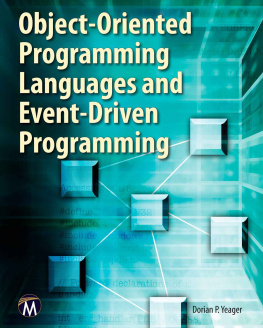GOING FOR ANOTHER RECORD
Lockheed's Starfighter, the F-104, was the first Mach 2 fighter aircraft, and the first to break the sound barrier in a climb. I had flight tested it for the Air Force back in 1954. The airplane had a bad pitch-up problem. Flying it at a thirty-degree angle of attack, its short, thin wings blanketed its T-shaped tail, causing the nose to suddenly rise dramatically. The next thing a pilot knew he was in a flat spin toward earth, pushing the throttle forward as far as it would go, high engine rpms being the only way to recover a 104 out of a flat spin.
The special rocket-powered 104s we had at the space school had the same pitch-up problem. Lockheed delivered three of them to us in 1963 for use in high-altitude, zero G training. Before our students began flying them, I decided to establish some operating parameters to learn at what altitude the aerodynamic pitch-up forces would be greater than the amount of thrust in the hydrogen peroxide rockets installed on the nose. We had two 250-pound thrusters to train for maneuvering in zero G conditions. We thought we would encounter pitch up somewhere around 95,000 feet. And while I was at it, I wanted to establish an altitude record in the rocket version of the 104. I flew it on the morning of December 12, 1963, and had the airplane up to 108,000 feet. It had gone beautifully, and I was scheduled for a second night in the afternoon. Mom was visiting us, and Glennis drove her over to base operations. We had a quick lunch; I was still wearing my bulky pressure suit because once you get sweaty and take it off, you can't get it back on. Then they took off, and so did I.
I climbed to 35,000 feet, about one hundred miles from Edwards at the foot end of the San Joaquin Valley near Fraser Peak, and headed for Rogers Dry Lake at 37,000 feet in afterburner. I was traveling at better than Mach 2 when I fired the six-thousand-pound thrust rocket in my tail that burned a mixture of hydrogen peroxide and jet fuel. By then, I was climbing at a steep seventy-degree angle, whistling through 60,000, feet and the afterburner flamed out, oxygen-starved in the thin atmosphere. That was expected. Later, I planned to go into a shallow dive to allow the engine blades to windmill in the rush of air, working up the necessary revolutions enabling re-ignition in the lower air, at about 40,000 feet. So I shut down the engine and let the rocket carry me over the top. I had to watch my tailpipe temperature, because at my steep climbing angle it would overtemp even though I was on idle.
I went over the top at 104,000 feet, and as the airplane completed its long arc, it fell over. But as the angle of attack reached twenty-eight degrees, the nose pitched up. That had happened in the morning flight as well. I used the small rocket thrusters on the nose to push it down. I had no problem then. This time, the damned thrusters had no effect. I kept those peroxide ports open, using all my peroxide trying to get that nose down, but I couldn't. My nose was stuck high, and the damned airplane finally fell off flat and went into a spin.
I was spinning down like a record on a turntable, and because I couldn't get into a shallow dive and drive air through the engine turbine, my rpms were falling off drastically. I had no hydraulic pressure because that operated off the engine, which had wound down to the point where it stopped and locked at about 40,000 feet. I was feeling kind of hopeless about this ride. The data recorder would later indicate that the airplane made fourteen flat spins from 104,000 until impact on the desert floor. I stayed with it through thirteen of those spins before I punched out. I hated losing an expensive airplane, but I couldn't think of anything else to do.
OTHER VOICES: Bud Anderson
Chuck likes to say that I was flying with him every time he was forced to bail out of an airplane. The first time was during squadron training in Wyoming, while staging a simulated attack against a box of B-24s, and I saw this P-39 whipping past, upside down, trailing smoke, and thought, "Man, they make these exercises realistic." Then I saw that the guy jumping for it was Chuck. The second time was in the skies over France. Technically he is right: I was flying with him with a bunch of other P-51s, trying to shoot down Germans. I didn't learn that he had been shot down and jumped for it until I got back to England. The third time was flying chase for him when he flew in the NF-104. I happened to be flying in a T-33 as he was taking off on his second flight of the day in the rocket-powered 104. I knew he was going up, so I had my radio on his frequency, and I heard his chase pilot abort because of a wheel shimmy while he was taxiing for takeoff. Chuck took off anyway. But he had to have a chase plane or the flight would be canceled, so I called over to them and said, "Hey, I'm right over the field and I'll chase you." Hell, there wasn't much a chase plane could do in this case, but try to follow the guy and eyeball him as long as he could. I knew he was going up to 100,000 feet, so I'd try to keep him in sight to be in the area where he came down and offer any assistance, if necessary. So, Chuck continued with the flight, with me as his chase. And God, I saw that airplane coming down just like an autumn leaf off a tree. As a matter of fact, it was falling so flat and so straight, that I could circle him, kind of corkscrewing down with him. We went through about 14,000 feet and I said, "Hey, Chuck, that's enough. Get out."
He punched out a few seconds later, much to my relief, because I was beginning to think he was going in with the airplane in the effort to save it. I circled around and watched him float down on the deck and hit. It seemed like a perfect chute deployment, and I came in low over the deck to check on him. I expected to see him up, chute gone, waving at me. Instead, he was just Lying there. I thought that was strange. I came around a second time and he was still Lying there, but this time I saw an arm wave. So I said, "Hell, no problem." By then I was talking to the base, and a chopper was enroute to get him. So I went back, but Chuck didn't come in. I found out they had flown him directly to the hospital. I got in the car and drove over. I went into the emergency room, and there was Glennis looking really grim. I said, "What's up?" She told me he was very severely burned. I thought she got it wrong and went inside and the doctor told me the same thing. I said, "Burns! What are you talking about, burns? How can a guy get burned bailing out?"
I went ahead and punched out. My pressure suit was inflated and a rocket charge underneath blew me and my seat straight up at 90 mph. An automatic device unhooked my seat belt and released the parachute ring from the seat. A seat-butt kicker, another small charge kicked me out and straight down. I began falling picking up speed, tumbling headfirst toward earth, and I saw that damned seat tumbling with me, somehow becoming entangled in my chute lines. There was still residual fire in the back of that seat from the rocket charge and my shroud lines began smoldering. Christ, I saw that clearly. The chute popped, jarring me, and I sweated that those lines hadn't burnt through. I had a quick sense of relief, though, because the popping chute dislodged the seat. Then the seat smashed into my face. I got clobbered by the tube end of the rocket, glowing red hot.
It just knocked the shit out of me. It hit me so hard that I really didn't know what happened. Busted the faceplate out of my helmet; I saw stars. Suddenly there was a roar. Burning stuff on that seat ignited the rubber seal around my helmet and in the pure oxygen environment, it erupted like a blow torch. My head was engulfed in flames and smoke. I couldn't breathe. I couldn't see out of my left eye where the seat had bashed me. I was choking to death on smoke, gasping to draw a breath. I stuck my hand inside the open faceplate and tried to scoop in air to breathe. My gloved hand caught on fire. I thought, "What a way to go!" I was still hooked to an emergency oxygen bottle, feeding oxygen to the flames. By instinct I pushed up the visor on what was left of my helmet. That automatically shut off the oxygen. By then, I was very close to the ground and there was still residual flame, smoke, and soot pouring out of my helmet. I hit the ground hard.
Next page
